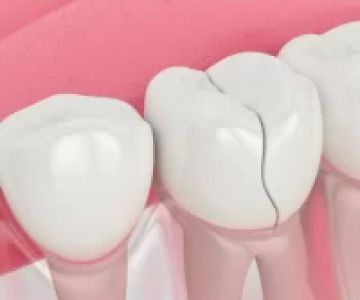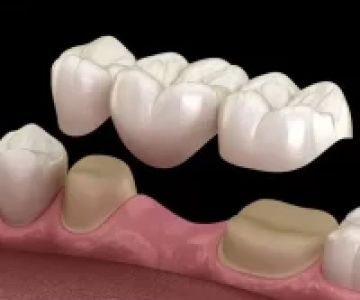How to Repair Broken Teeth with Dental Bonding: A Comprehensive Guide
- 1. What Is Dental Bonding?
- 2. How Dental Bonding Works to Repair Broken Teeth
- 3. Benefits of Dental Bonding for Broken Teeth
- 4. The Dental Bonding Procedure for Broken Teeth
- 5. Aftercare for Dental Bonding
- 6. Cost and Durability of Dental Bonding
- 7. When to Consider Other Dental Repair Options
1. What Is Dental Bonding?
Dental bonding is a cosmetic dental procedure used to repair broken or chipped teeth. It involves applying a tooth-colored resin material to the affected area, which is then hardened using a special light. The process is quick, minimally invasive, and can restore the tooth’s natural appearance and function.
2. How Dental Bonding Works to Repair Broken Teeth
When a tooth is broken, dental bonding can effectively restore its shape and structure. The dentist first prepares the tooth by roughening its surface slightly and applying a conditioning liquid. Then, the resin material is carefully applied to the broken area, molded to the desired shape, and hardened with ultraviolet light. Once set, the material is smoothed and polished to match the natural tooth color, blending seamlessly with your smile.
3. Benefits of Dental Bonding for Broken Teeth
Dental bonding offers several advantages, making it a popular choice for repairing broken teeth:
Quick and Non-Invasive
The procedure can be completed in a single visit, with minimal discomfort and no need for anesthesia in most cases. This makes dental bonding a convenient option for people with busy schedules.
Cost-Effective
Compared to other dental restoration options, such as crowns or veneers, dental bonding is relatively affordable. This makes it an attractive option for people looking to repair broken teeth without breaking the bank.
Natural-Looking Results
The composite resin used in dental bonding can be precisely matched to the color of your natural teeth, resulting in a repair that blends in perfectly with your smile.
4. The Dental Bonding Procedure for Broken Teeth
The procedure for dental bonding typically involves the following steps:
Initial Consultation
Your dentist will first examine your broken tooth and discuss your treatment goals. They may take X-rays to assess the extent of the damage and determine if bonding is the best solution for you.
Preparation
The dentist will prepare the tooth by roughening its surface and applying a conditioning liquid. This helps the bonding material adhere better to the tooth.
Application and Shaping
The resin material is then applied and molded to fill in the break or chip. The dentist will sculpt it to match the natural contours of your tooth.
Curing and Polishing
Once the resin is applied, it is hardened using a special ultraviolet light. Afterward, the material is polished and shaped to create a smooth, natural appearance that blends with the rest of your teeth.
5. Aftercare for Dental Bonding
After receiving dental bonding, it’s important to follow your dentist’s aftercare instructions to ensure the longevity of your repair. Avoid eating hard foods or chewing on the bonded tooth for the first 24 hours. Additionally, you should maintain good oral hygiene by brushing and flossing regularly to prevent plaque buildup around the bonded area.
6. Cost and Durability of Dental Bonding
The cost of dental bonding can vary depending on the severity of the break and the location of the tooth. On average, it is more affordable than other restorative treatments like crowns or veneers. However, the durability of dental bonding is not as long-lasting as other options, typically lasting between 5 to 10 years, depending on how well you take care of it.
7. When to Consider Other Dental Repair Options
While dental bonding is an effective solution for many types of broken teeth, it may not be the best option for all cases. If the break is severe or affects a large portion of the tooth, other treatments like dental crowns or veneers may be recommended for a more permanent solution. Your dentist will help you determine the best course of action based on the severity of the damage.







 Westgate Dental Arts
Westgate Dental Arts Coventry Family Dental
Coventry Family Dental Familia Dental
Familia Dental Dr. Daniel S. Fife, DDS
Dr. Daniel S. Fife, DDS Dentistry At Suburban Square: Michael I. Wollock, DMD
Dentistry At Suburban Square: Michael I. Wollock, DMD Comfort Care Dental
Comfort Care Dental The Importance of Oral Health Education During Pregnancy for a Healthy Pregnancy
The Importance of Oral Health Education During Pregnancy for a Healthy Pregnancy Why Skipping Dental Checkups Can Lead to Bigger Oral Health Problems
Why Skipping Dental Checkups Can Lead to Bigger Oral Health Problems Best Tips for Brushing Your Teeth Properly for Healthy Gums: Essential Techniques for Oral Health
Best Tips for Brushing Your Teeth Properly for Healthy Gums: Essential Techniques for Oral Health Advantages of Porcelain Dental Restorations
Advantages of Porcelain Dental Restorations How Can Diabetes Cause Tooth and Gum Problems? Preventing and Managing Oral Health Issues
How Can Diabetes Cause Tooth and Gum Problems? Preventing and Managing Oral Health Issues Healthy Habits for Promoting Good Oral Health and Hygiene: Tips for a Healthy Smile
Healthy Habits for Promoting Good Oral Health and Hygiene: Tips for a Healthy Smile